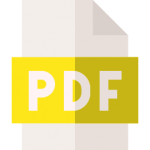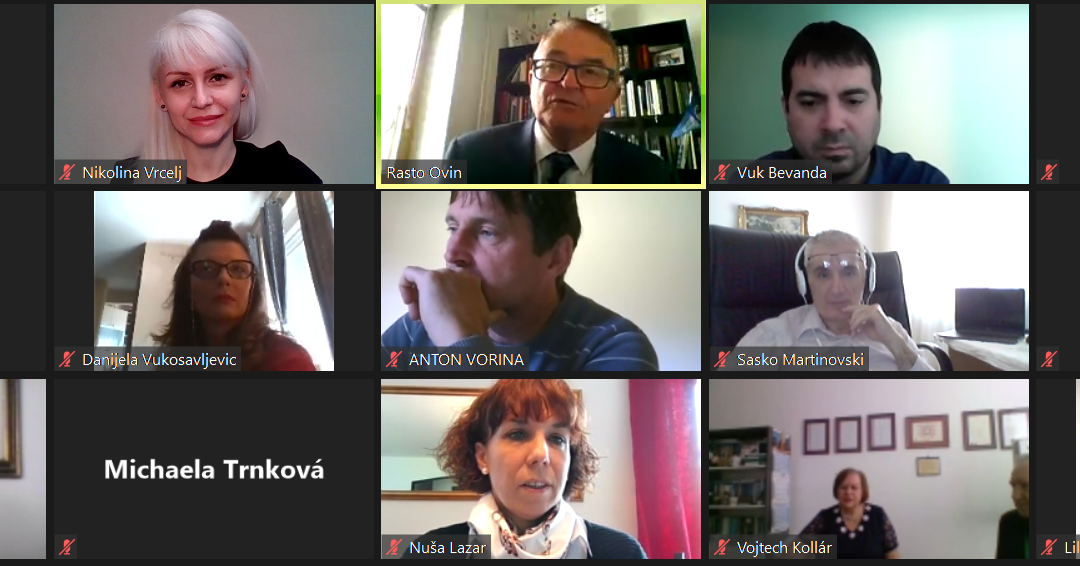Human Resource Management with the Support of Management Information Systems
Anna Látečková – Slovak University of Agriculture in Nitra, Tr. A. Hlinku 2, 949 76 Nitra, Slovakia
Michaela Trnková – Slovak University of Agriculture in Nitra, Tr. A. Hlinku 2, 949 76 Nitra, Slovakia
7th International Scientific ERAZ Conference – ERAZ 2021 – Selected Papers: KNOWLEDGE BASED SUSTAINABLE DEVELOPMENT, Online/virtual, May 27, 2021
ERAZ Conference Selected Papers are published by: Association of Economists and Managers of the Balkans – Belgrade, Serbia
ERAZ conference partners: Faculty of Economics and Business, Mediterranean University, Montenegro; University of National and World Economy – Sofia, Bulgaria; Faculty of Commercial and Business Studies – Celje, Slovenia; AMBIS University, Prague – Czech Republic; Faculty of Applied Management, Economics and Finance – Belgrade, Serbia
ERAZ Conference 2021 Selected Papers ISBN 978-86-80194-47-9, ISSN 2683-5568, DOI: https://doi.org/10.31410/ERAZ.S.P.2021
Keywords:
Accounting profit/loss;
Employee training;
Enterprise competitiveness;
Labour productivity;
Software
Abstract: At present, new technologies are crucial in maintaining the competitiveness of businesses. In recent years, the application of management information systems has also increased in the field of human resource management, where they support many decisions concerning human resources. Emphasis is placed on employee training and the use of information systems in terms of achieving a competitive advantage. The practical part is focused on finding the dependence between employee training, the use of information systems and the competitiveness of the selected enterprise, where regression and correlation analysis is applied. Regarding the performed analysis, we confirm the significant impact between the costs spent on employee training, the costs spent on information systems and the accounting profit/ loss, labour productivity in the selected enterprise. Based on the results of the research, generalized findings and suggestions are presented.

ERAZ Conference
Creative Commons Non Commercial CC BY-NC: This article is distributed under the terms of the Creative Commons Attribution-Non-Commercial 4.0 License (https://creativecommons.org/licenses/by-nc/4.0/) which permits non-commercial use, reproduction and distribution of the work without further permission.

References
Antoniadis, I., Tsiakiris, T., & Tsopogloy, S. (2015). Business Intelligence during times of crisis: Adoption and usage of ERP systems by SMEs, Proceedings of the 3rd International Conference on Strategic Innovative Marketing (IC-SIM 2014), 175, 299-307. 10.1016/j.sbspro.2015.01.1204.
Bal, Y., Bozkurt, S., & Ertemsir, E. (2012). The Importance of Using Human Resources Information Systems (HRIS) and a Research on Determining the Success of HRIS, Knowledge and Learning Global Empowerment Proceedings of the Management, Knowledge and Learning International Conference 2012, 53-62. https://econpapers.repec.org/bookchap/ isvmklp12/53-62.htm.
Barišić, A. F., Poor, J., & Bach, M. P. (2019). The Intensity of Human Resources Information Systems usage and Organizational Performance, Interdisciplinary Description of Complex Systems, 17 (3), 586-597. 10.7906/indecs.17.3.15.
Begum, H. et al. (2016). Costs reduction and productivity improvement through HRIS, International Journal of Innovation and Sustainable Development, 14 (2), 185-198. 10.1504/ IJISD.2020.106235.
Casalino, N. et al. (2019). Automation, Technology Transfer and Managerial Practices for Organizational Growth of SMEs. A Smart Curriculum for Competitiveness, 2019 IEEE Global Engineering Education Conference (EDUCON), 1534-1541. 10.1109/EDUCON.2019.8725229
Chahar, B., Hatwal V., & Sen, S. (2019). Employees training and its impact on learning and creativity: moderating effect of organizational climate, Problems and Perspectives in Management, 17 (2), 430-439. 10.21511/ppm.17(2).2019.33.
Chiu, T-Ch. S. (2015). The Impact of Training Investment and Employee Communication on Innovation: The Mediation of Employee Participation, 2015 Third International Conference on Robot, Vision and Signal Processing (RVSP), pp. 90-94. 10.1109/RVSP.2015.31
Gedam, R. K. (2011). Human Resource Information System (HRIS): A Strategic Tool for Competitive Advantage and Corporate Sustainability, International Conference on Strategies & Innovations for Sustainable Development in Organizations, 302-317. http://apps. webofknowledge.com/full_record.do?product=WOS&search_mode=GeneralSearch&qid=13&SID=D2cscvInuOJflCrX1aY&page=1&doc=1.
Kapustina, L. V., & Martynova, I. A. (2020). Training Employees in the Digital Economy with the Use of Video Games, Digital Transformation of the Economy: Challenges, Trends and New Opportunities, 908, 444–454. 10.1007/978-3-030-11367-4_44.
Kushwaha, P., Yadav, P., & Prasad, J. (2018). Impact of enterprise resource planning on human resource management in automobile sector: Statistical analysis, Journal of Statistics and Management Systems, 21 (4), 601-615. 10.1080/09720510.2018.1466967.
Li, H., & Wang, H. (2015). On Interaction between Technological Innovation and Core Competitiveness of Enterprise, Proceedings of the 2015 International Conference on Industrial Technology and Management Science (ITMS 2015), 34, 957-959. 10.2991/itms-15.2015.230.
Loonam, J. et al. (2014). Top Managers and Information Systems: Crossing the Rubicon! Strategic Change, 23 (3-4), 205-224. 10.1002/jsc.1971.
Lorincova, S., Vetrakova, M., & Lizbetinova, L. (2018) The Efficiency of Selected Employee Education Methods, 31st International-Business-Information-Management-Association Conference, 3810-3819. http://apps.webofknowledge.com/full_record.do?product=WOS&search_mode=GeneralSearch&qid=24&SID=C2DY4Xf9J5bnZPdHUJy&page=1&doc=1.
Ma, Z. (2018). Research on the Promotion Strategy of Enterprise Core Competitiveness Based on Human Capital Integration, 4th International Conference on Economics, Management And Humanities Science (ECOMHS 2018), 537-540. 10.25236/ecomhs.2018.118.
Majdúchová, H., & Neumannová, A. (2008). Podnikové hospodárstvo pre manažérov. Bratislava, Slovakia: Ekonómia.
Marwan, M. S. (2014). The Role of Human Resources Management Practices Represented by Employee’s Recruitment and Training and Motivating in Realization Competitive Advantage, International Business Research, 7 (4), 55-72. 10.5539/ibr.v7n4p55.
Matejková, E., Pietriková, M., & Poláková, Z. (2018). Praktikum zo štatistiky A. Nitra, Slovakia: SPU.
Memeti, A., Azizi, A., & Luma-Osmani, S. (2019). Human Resources Management System: SOA Reference Model, International Journal on Information Technologies and Security, 11 (4), 29-38. http://ijits-bg.com/last-published-issue-No_4-2019.php.
Pérez-Méndez, A. J., & Machado-Cabezas, Á. (2015). Relationship between management information systems and corporate performance (Relación entre los sistemas de información de gestión y el resultado empresarial, Revista de Contabilidad), vol. 18, no. 1, pp. 32-43. 10.1016/j.rcsar.2014.02.001.
Potgieter, I. L., & Mokomane, S. E. (2020). Implementation of human resource management functions in selected small manufacturing companies in Ga-Rankuwa industrial area, Gauteng, South Africa, SA Journal of Human Resource Management, 18, 1-11. 10.4102/ sajhrm.v18i0.1282.
Ramírez, Y., & Tejada, Á. (2020). University stakeholders’ perceptions of the impact and benefits of, and barriers to, human resource information systems in Spanish universities, International Review of Administrative Sciences, 1-18. 10.1177/0020852319890646.
Register Účtovných Závierok. (2019). Knauf Insulation, s. r. o., © 2019. https://www.registeruz. sk/cruz-public/domain/accountingentity/show/169057.
Siengthai, S., & Udomphol, A. (2016). The Impact of Human Resource Information System (HRIS) on Organizational Effectiveness: A Case Study of the Textile Industry in Thailand, International Journal of Asian Business and Information Management, 7 (3), 40-53. 10.4018/IJABIM.2016070103.
Šegota, A., Tomljanović, M., & Huđek, I. (2017). Contemporary Approaches to Measuring Competitiveness – The Case of EU Member States, Zbornik radova Ekonomskog fakulteta u Rijeci, 35 (1), 123-150. 10.18045/zbefri.2017.1.123.
Tzamalis, M. (2015). The upgrading of technical professions through attendance of adult training programs and participation in qualification certification procedures, Epitheorese Klinikes Farmakologias kai Farmakokinetikes, 33 (2), 175-179. https://www.scopus.com/record/display.uri?eid=2-s2.0-84938697265&origin=resultslist&sort =plf-f&src=s&sid=09cc9c936b8781846e87f2bff8a2ad94&sot=b&sdt=b&sl=40&s=AUTHO R-NAME%28tzamalis%29+AND+PUBYEAR+%3d+2015&relpos=2&citeCnt=0&searchTer m=#references.
Zhan, J. et al. (2019). Improvement of the inspection-repair process with building information modeling and image classification, Facilities, 37 (7-8), 395–414. 10.1108/F-01-2018-0005.

